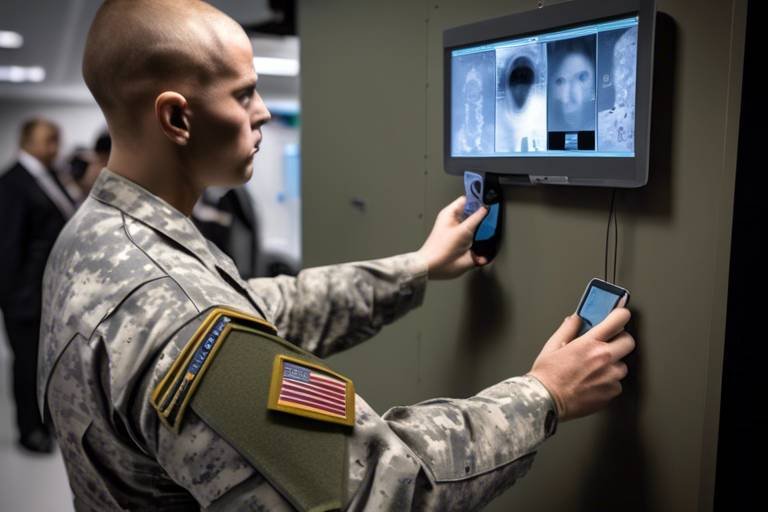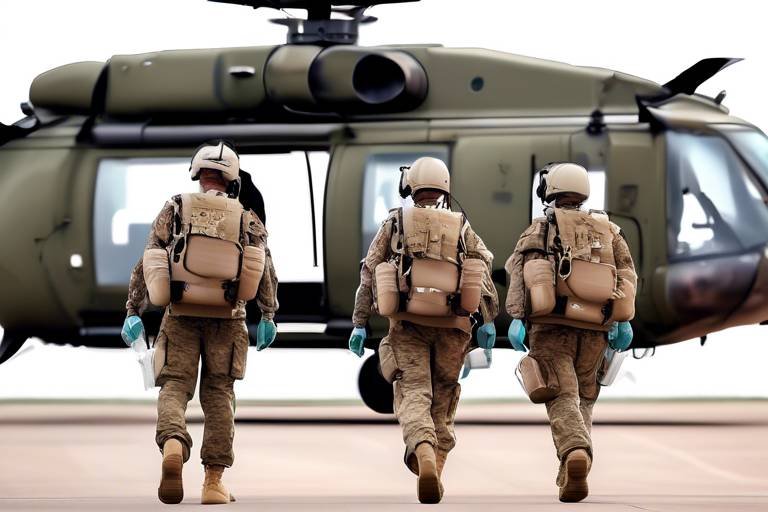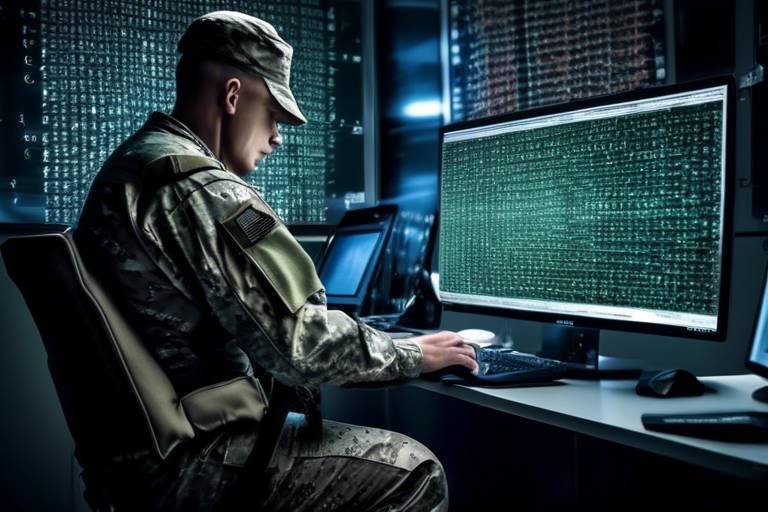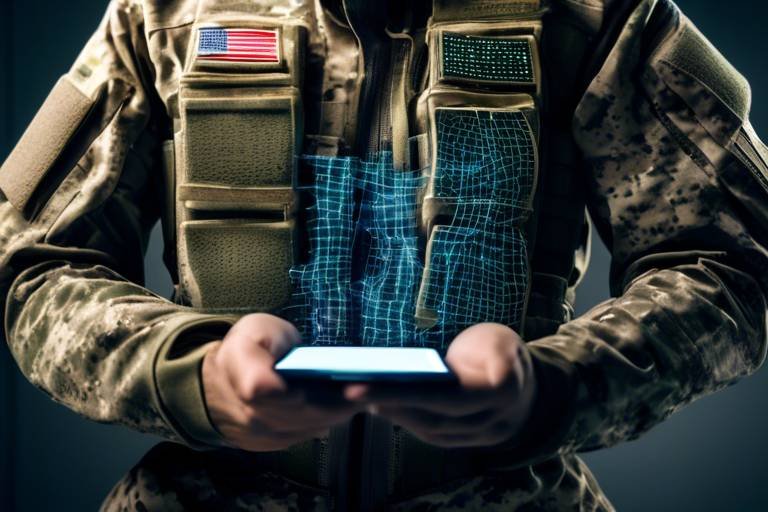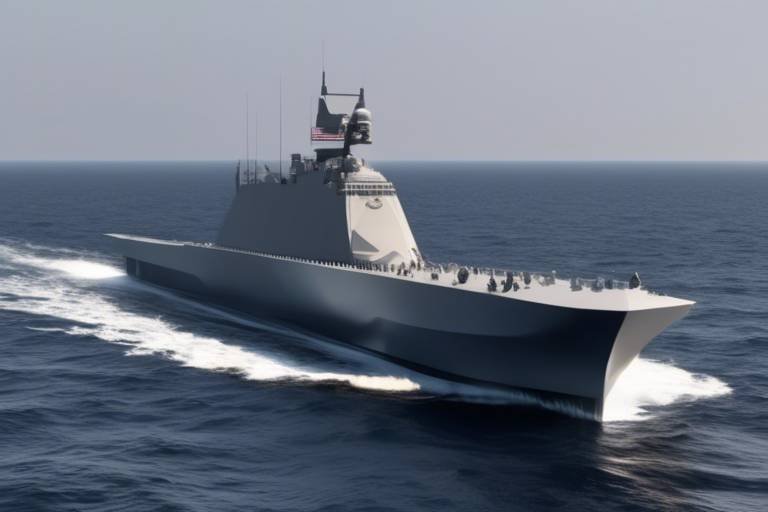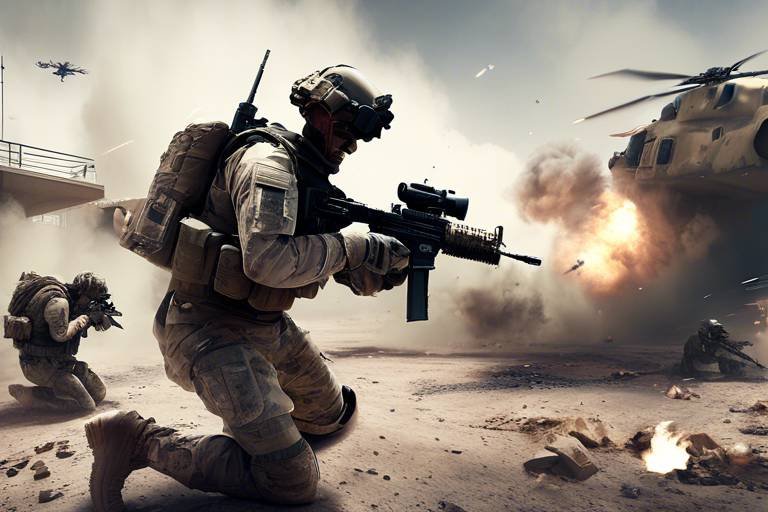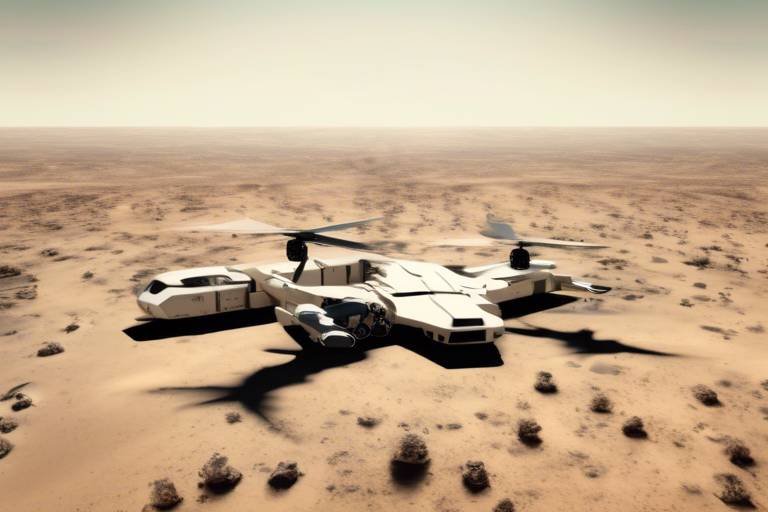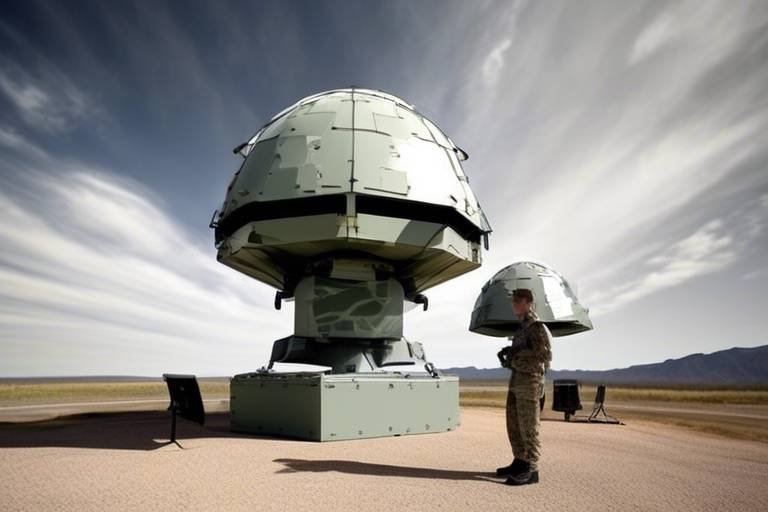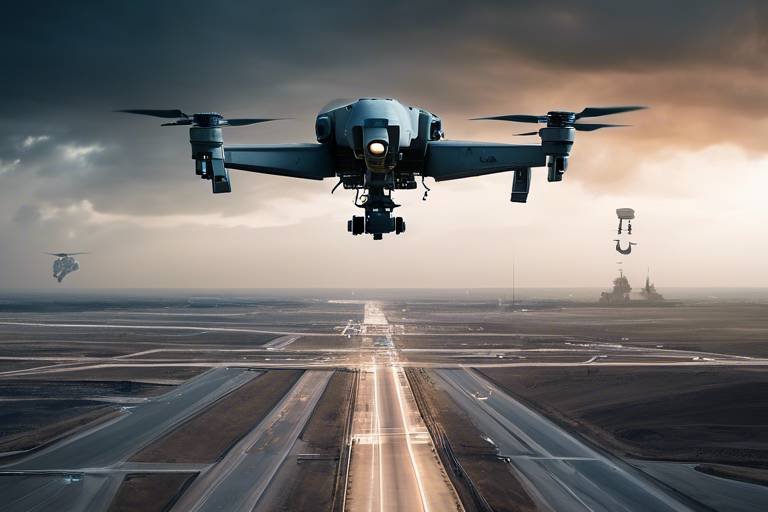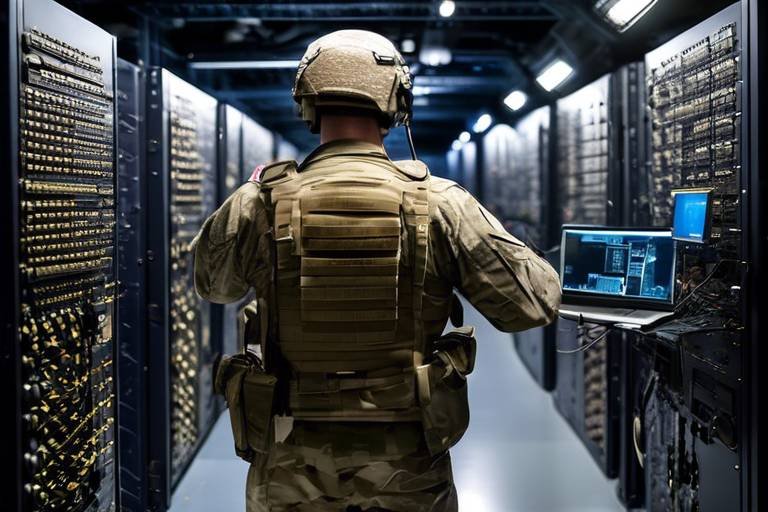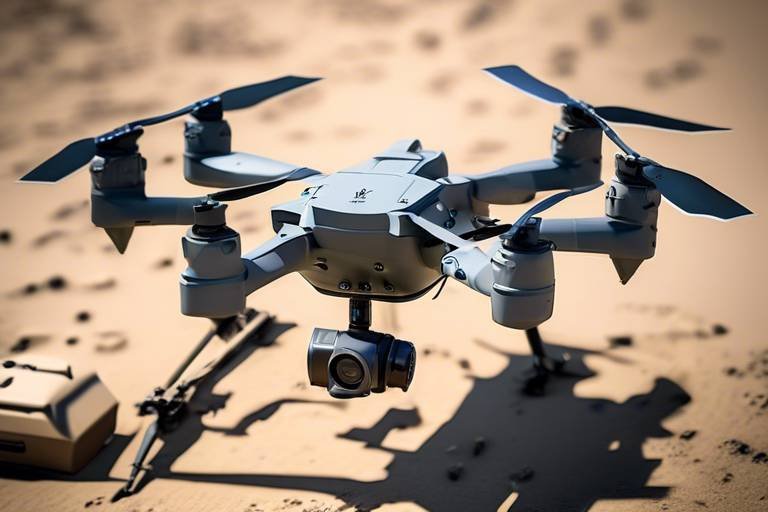The Role of AI in Enhancing Combat Decision Making
In today's rapidly evolving battlefield, the integration of artificial intelligence (AI) is not just a trend; it's a transformative force reshaping military strategies and operational efficiency. Imagine a scenario where commanders can make split-second decisions with the backing of powerful algorithms that analyze vast amounts of data in real-time. This isn't science fiction; it's the reality of modern warfare. AI is stepping in to enhance combat decision-making processes, making them not only faster but also more informed and precise.
As we delve deeper into the role of AI in combat, it becomes clear that its applications extend beyond mere automation. AI technologies are revolutionizing how military forces gather intelligence, analyze data, and execute strategies. The stakes are high, and the consequences of decision-making in combat scenarios can be the difference between victory and defeat. Therefore, understanding how AI enhances these processes is crucial for anyone interested in the future of warfare.
One of the most exciting aspects of AI's role in combat decision-making is its ability to process and analyze massive datasets. Traditional methods of gathering intelligence are often slow and cumbersome, but AI algorithms can sift through information from various sources—satellite imagery, reconnaissance reports, and even social media—at lightning speed. This capability allows military personnel to maintain a heightened state of situational awareness, ensuring they are always one step ahead of the enemy.
Moreover, the development of real-time decision support systems powered by AI is a game-changer. These systems provide commanders with actionable insights, helping them to make informed decisions on the battlefield. Imagine a general receiving instant updates on troop movements, enemy positions, and logistical challenges, all analyzed in real-time. This level of support not only enhances decision-making but also builds confidence among military leaders, knowing they have reliable data at their fingertips.
Another fascinating aspect of AI in combat is its ability to use predictive analytics. By analyzing historical data and current battlefield dynamics, AI can forecast potential outcomes and scenarios. This foresight allows military leaders to prepare for various combat situations effectively, ensuring they are not just reacting to events but proactively shaping them. It’s akin to having a chess master who can predict several moves ahead, giving them a significant advantage.
Furthermore, the rise of autonomous systems and drones has added a new dimension to military operations. These AI-driven technologies are not only capable of surveillance and reconnaissance but can also execute targeted strikes with precision. The ability to deploy drones that can operate with minimal human intervention allows for a more strategic approach to combat, reducing risks to personnel while maximizing effectiveness on the battlefield.
However, with great power comes great responsibility. The ethical implications of using AI in warfare cannot be overlooked. Questions about accountability, decision-making autonomy, and the potential for unintended consequences are at the forefront of discussions surrounding AI in combat. As military forces embrace these technologies, they must also grapple with the moral dilemmas they present, ensuring that the use of AI aligns with international laws and humanitarian principles.
As we look to the future, it’s clear that AI will continue to play an increasingly vital role in military operations. The advancements in AI technology are set to revolutionize training programs, enhance simulations, and improve decision-making skills among military personnel. By integrating virtual reality with AI, soldiers can engage in realistic training environments that prepare them for diverse combat scenarios. This not only boosts their tactical decision-making abilities but also fosters a culture of continuous improvement.
In conclusion, the role of AI in enhancing combat decision-making is profound and multifaceted. From data analysis and real-time support systems to ethical considerations and future advancements, AI is reshaping the landscape of modern warfare. As military forces around the globe continue to adopt these technologies, the implications for strategy, efficiency, and accountability will be significant.
- How does AI improve decision-making in combat? AI enhances decision-making by processing large datasets quickly, providing real-time insights, and predicting potential outcomes based on historical data.
- What are the ethical concerns surrounding AI in warfare? Ethical concerns include accountability for decisions made by AI systems, the potential for unintended consequences, and ensuring compliance with international humanitarian laws.
- Can AI replace human decision-makers in military operations? While AI can assist and augment decision-making, human oversight remains crucial to address complex ethical dilemmas and ensure accountability.
- What role do autonomous systems play in modern warfare? Autonomous systems, including drones, enhance surveillance, reconnaissance, and precision strikes, reducing risks to personnel while improving operational effectiveness.
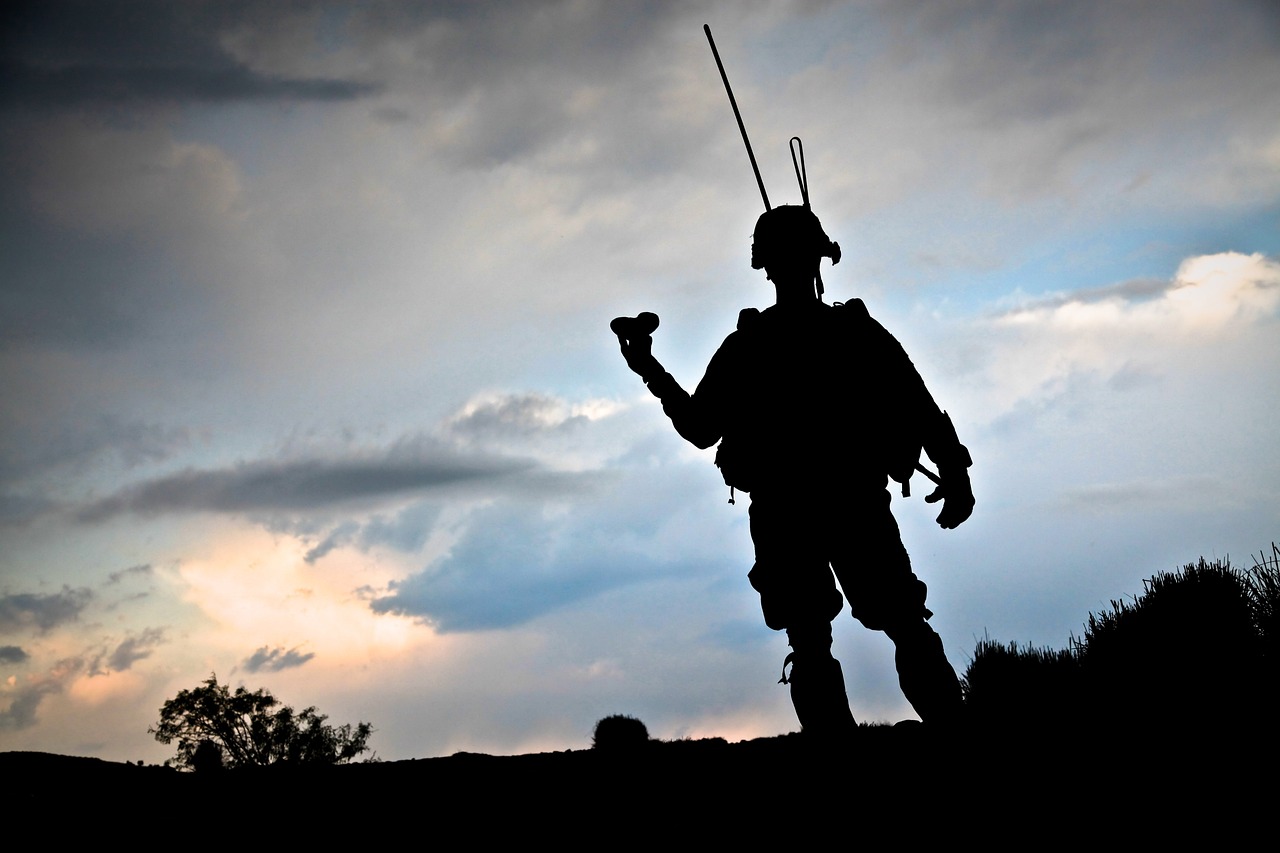
Understanding AI in Military Context
Artificial Intelligence (AI) has emerged as a game-changer in various sectors, but its impact on the military is particularly profound. At its core, AI refers to the simulation of human intelligence in machines, enabling them to think, learn, and make decisions akin to humans. In the military context, AI encompasses a range of technologies, from simple algorithms that analyze data to complex systems capable of autonomous decision-making. This shift towards AI-driven operations is not just a trend; it's a fundamental transformation that is reshaping how armed forces approach combat and strategy.
The integration of AI in military operations allows for enhanced capabilities in several key areas. For instance, AI can process and analyze vast amounts of data at speeds far beyond human capability. This means that military leaders can receive real-time insights that inform their strategies and tactics. Imagine having a personal assistant that not only organizes your schedule but also predicts potential challenges and opportunities based on past behavior. That's what AI does for military operations—it sifts through data to provide actionable intelligence, making commanders' jobs easier and more effective.
One of the most significant aspects of AI in the military is its ability to improve decision-making processes. Traditionally, military decisions were made based on the experience and intuition of commanders, which, while valuable, could sometimes lead to errors or delays. Now, with AI, these decisions can be supported by data-driven insights. For example, AI can analyze historical battle data, assess current battlefield conditions, and even simulate potential outcomes of different strategies. This capability not only enhances the speed of decision-making but also increases the accuracy of those decisions.
Furthermore, the relevance of AI extends beyond just data analysis. It also plays a crucial role in logistics, resource management, and operational planning. With AI, military planners can optimize supply chains, predict equipment failures, and allocate resources more efficiently. Think of it as having a highly skilled logistics officer who can foresee potential bottlenecks and suggest solutions before they become problematic. This proactive approach ensures that military operations run smoothly, even in the most chaotic environments.
In addition to these operational benefits, AI also introduces new capabilities that were previously unimaginable. For instance, the development of autonomous systems—such as drones and robotic vehicles—has transformed how reconnaissance and combat missions are conducted. These systems can operate in environments that are too dangerous for human soldiers, gathering intelligence or even engaging in combat without risking lives. However, this raises important questions about the future of warfare and the ethical implications of using machines in combat scenarios.
In conclusion, understanding AI in the military context is essential for grasping its transformative potential. As technology continues to evolve, the reliance on AI will only deepen, making it a crucial component of modern warfare. The military's ability to harness AI effectively will determine not only its operational success but also its strategic advantage on the global stage.
- What is AI in the military?
AI in the military refers to the use of artificial intelligence technologies to enhance decision-making, data analysis, and operational efficiency in combat scenarios.
- How does AI improve decision-making in combat?
AI analyzes vast amounts of data quickly, providing military leaders with real-time insights that support informed decision-making.
- What are autonomous systems in warfare?
Autonomous systems are AI-driven machines, such as drones or robotic vehicles, that can operate independently to perform tasks like surveillance or combat missions.
- What ethical concerns are associated with AI in warfare?
Concerns include accountability for AI-driven decisions, the potential for unintended consequences, and the moral implications of using machines in combat.

Data Analysis and Intelligence Gathering
In the ever-evolving landscape of modern warfare, data analysis and intelligence gathering have become crucial components that can determine the outcome of combat scenarios. The sheer volume of data generated on the battlefield is staggering, from satellite images and drone footage to social media feeds and intercepted communications. This is where artificial intelligence steps in, acting as a powerful ally for military forces by processing this vast array of information in real-time.
Imagine sifting through mountains of data manually; it would be akin to finding a needle in a haystack. However, with AI algorithms, military analysts can quickly identify patterns, detect anomalies, and extract actionable insights that would take human analysts an eternity to uncover. By employing techniques such as machine learning and natural language processing, AI can analyze text, images, and even video feeds, providing commanders with a comprehensive understanding of the battlefield landscape.
One of the standout features of AI in this context is its ability to enhance situational awareness. With AI-driven systems, military personnel can gain a clearer picture of enemy movements, troop deployments, and potential threats. For example, AI can aggregate data from various sources, including reconnaissance drones and ground sensors, and present it in an easily digestible format. This means that commanders can make informed decisions faster, potentially turning the tide of battle in their favor.
Moreover, the integration of AI in data analysis goes beyond just processing information; it also involves predictive analytics. By analyzing historical data and current trends, AI can forecast potential enemy actions, allowing military leaders to prepare for various scenarios. This predictive capability is akin to having a crystal ball that offers insights into possible future events, enabling proactive measures rather than reactive ones.
To illustrate the impact of AI on intelligence gathering, consider the following table that highlights key benefits:
| Benefit | Description |
|---|---|
| Speed | AI processes vast amounts of data in seconds, allowing for quicker decision-making. |
| Accuracy | Advanced algorithms reduce human error and enhance data reliability. |
| Comprehensive Analysis | AI can integrate data from multiple sources, providing a holistic view of the battlefield. |
| Predictive Insights | AI forecasts potential enemy movements and actions, aiding strategic planning. |
In conclusion, the role of AI in data analysis and intelligence gathering cannot be overstated. It revolutionizes the way military forces operate, enabling them to gather critical information swiftly and accurately. As technology continues to advance, we can only anticipate even greater enhancements in the capabilities of AI, further solidifying its position as a game-changer in military operations.
- How does AI improve military intelligence gathering?
AI processes and analyzes vast amounts of data quickly, identifying patterns and actionable insights that enhance situational awareness. - What is predictive analytics in the military context?
Predictive analytics uses historical data and current trends to forecast potential enemy actions, allowing military leaders to prepare proactively. - Are there ethical concerns regarding AI in warfare?
Yes, there are significant ethical considerations, including accountability for AI-driven decisions and the potential for unintended consequences.
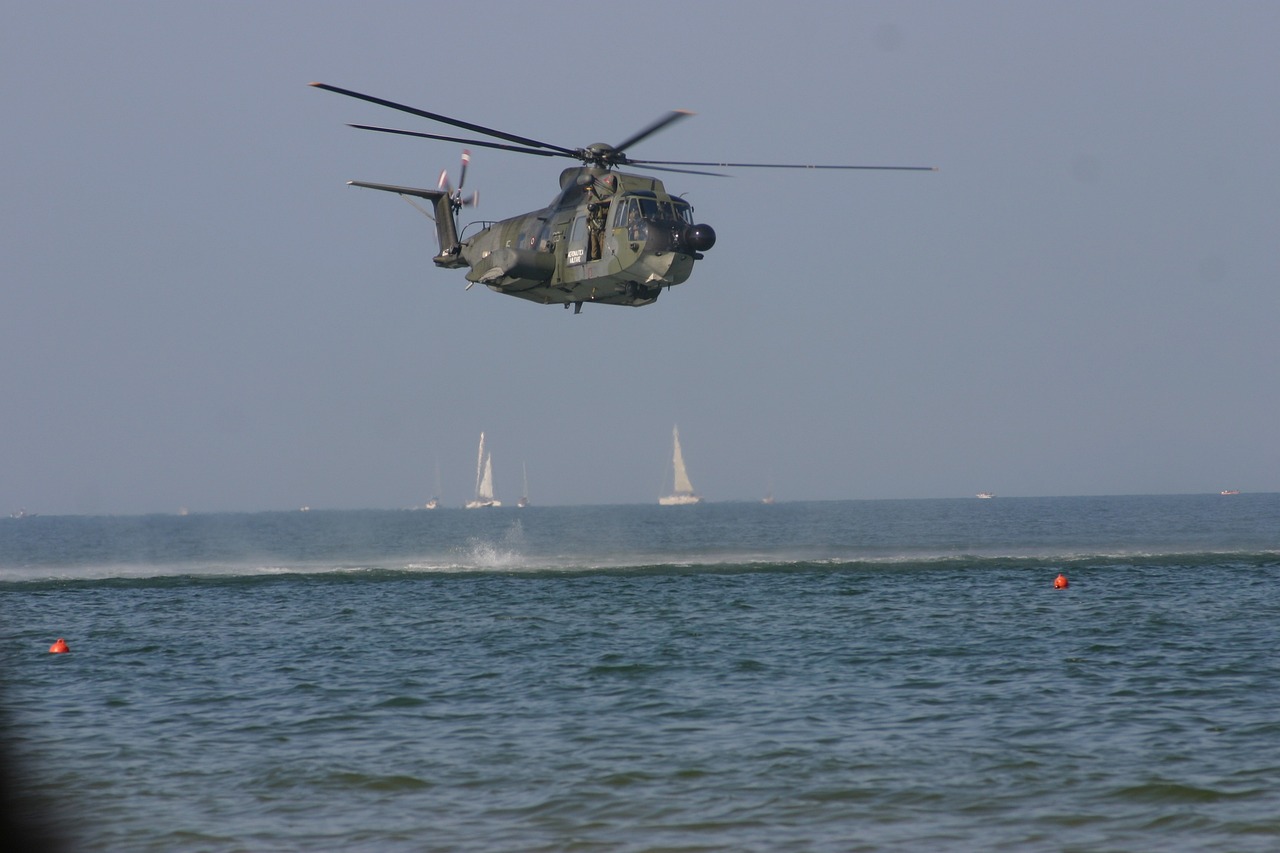
Real-Time Decision Support Systems
In the fast-paced world of military operations, the need for swift and informed decision-making has never been more critical. Enter Real-Time Decision Support Systems (RTDSS) powered by artificial intelligence. These sophisticated tools are designed to analyze real-time data and provide actionable insights to commanders on the battlefield. Imagine being in a high-stakes game of chess, where every second counts, and your opponent is unpredictable. This is akin to what military leaders face during combat. AI-driven RTDSS acts like a trusted advisor, offering strategic recommendations based on a multitude of factors, including troop movements, environmental conditions, and enemy activity.
The beauty of RTDSS lies in their ability to process vast amounts of information almost instantaneously. For instance, consider a scenario where a military unit is engaged in a complex operation. The RTDSS can analyze data from various sources—satellite imagery, drone feeds, and ground reports—and synthesize this information to present a clear picture of the battlefield. This capability not only enhances situational awareness but also significantly reduces the cognitive load on commanders, allowing them to focus on strategy rather than data overload.
One of the key features of these systems is their predictive analytics capability. By leveraging historical data and machine learning algorithms, RTDSS can forecast potential enemy actions and outcomes of various tactical decisions. This predictive power is akin to having a crystal ball that helps military leaders anticipate the next move of their adversaries, enabling them to adapt their strategies in real-time. For example, if the system indicates a high likelihood of an enemy ambush in a specific area, commanders can reroute their forces accordingly, minimizing risks and maximizing effectiveness.
Moreover, RTDSS fosters collaboration and communication among various units. In modern warfare, where operations are often joint efforts involving multiple branches of the military, having a centralized decision support system can streamline communication. Commanders can share insights and updates in real-time, ensuring that everyone is on the same page. This collaborative approach not only enhances operational efficiency but also builds trust among units, as they work together towards a common goal.
However, it’s essential to recognize that while RTDSS provides invaluable support, they are not infallible. The reliance on AI systems raises questions about accountability and the potential for errors. Military leaders must remain vigilant and not allow these systems to replace human judgment entirely. Instead, the ideal scenario is a synergistic relationship where AI assists but does not dictate decisions. This balance is crucial in maintaining ethical standards in warfare and ensuring that human oversight is always present.
In conclusion, Real-Time Decision Support Systems represent a significant leap forward in military decision-making. By harnessing the power of AI, these systems enhance situational awareness, improve predictive capabilities, and foster collaboration among military units. As technology continues to evolve, the integration of AI in military operations will undoubtedly shape the future of warfare, making it more efficient and effective while still requiring the irreplaceable touch of human judgment.
- What are Real-Time Decision Support Systems?
RTDSS are AI-powered tools that analyze real-time data to provide actionable insights for military commanders, enhancing decision-making during combat. - How do RTDSS improve situational awareness?
They synthesize data from various sources, such as satellite imagery and drone feeds, to present a clear and comprehensive view of the battlefield. - Can RTDSS predict enemy actions?
Yes, by utilizing historical data and machine learning, these systems can forecast potential enemy strategies and outcomes of tactical decisions. - What are the ethical concerns surrounding RTDSS?
The reliance on AI raises questions about accountability and the potential for errors, emphasizing the need for human oversight in decision-making.
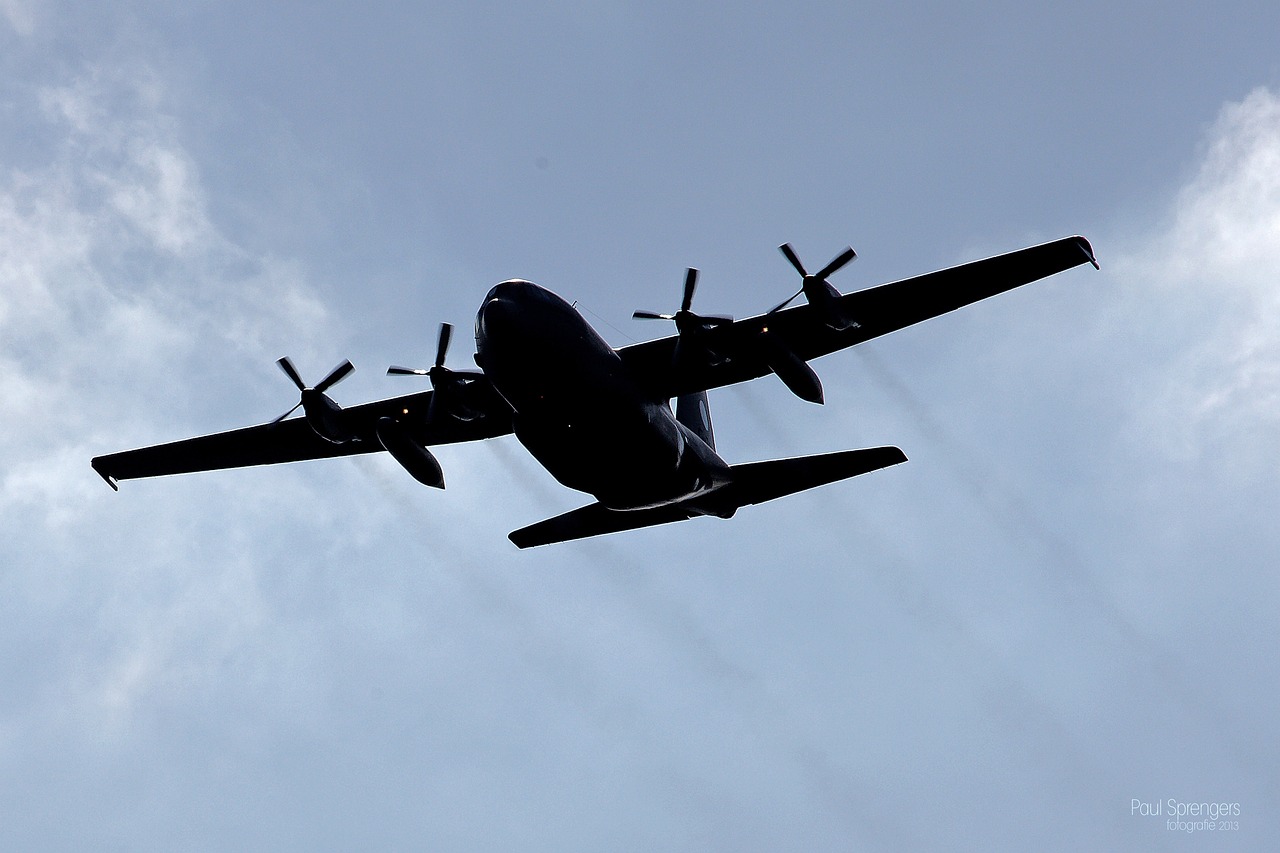
Predictive Analytics in Combat
Predictive analytics has emerged as a game-changer in the realm of military operations, fundamentally altering how decisions are made on the battlefield. By harnessing the power of artificial intelligence and data science, military leaders can forecast potential outcomes, assess risks, and strategize more effectively than ever before. Imagine having a crystal ball that not only predicts the enemy's next move but also provides insights into the best possible countermeasures. This is what predictive analytics brings to the table—an unprecedented level of foresight that enhances situational awareness and operational efficiency.
At its core, predictive analytics involves the analysis of historical data to identify patterns and trends that can inform future actions. In a combat scenario, this means evaluating past engagements, troop movements, and environmental factors to generate actionable intelligence. For instance, by analyzing previous battle outcomes alongside current troop positions and weather conditions, military strategists can develop a comprehensive understanding of potential scenarios. This allows them to prepare for various combat situations effectively, ensuring they are not just reacting but proactively planning.
One of the most significant advantages of predictive analytics in combat is its ability to simulate various scenarios. Through sophisticated algorithms, military analysts can create models that predict how different strategies might play out under specific conditions. This predictive modeling can be crucial when determining the best course of action in high-stakes situations. For example, if a commander knows that a particular tactic has historically resulted in a high success rate against a specific enemy type, they can confidently deploy that strategy, backed by data rather than instinct alone.
Moreover, the integration of machine learning algorithms enhances the accuracy of these predictions. As more data is collected from ongoing operations, the algorithms continuously learn and refine their predictions. This iterative process not only improves the reliability of forecasts but also enables military leaders to stay ahead of evolving threats. The ability to adapt quickly to changing circumstances is vital in combat, where the fog of war can obscure clear decision-making.
However, while the benefits of predictive analytics are profound, it does come with challenges. The reliance on data means that the quality of the predictions is only as good as the data being analyzed. Inaccurate or incomplete data can lead to misguided strategies and potentially disastrous outcomes. Therefore, ensuring data integrity and implementing robust data collection methods are essential components of any predictive analytics framework.
In summary, predictive analytics in combat represents a significant leap forward in military strategy. By leveraging data to forecast outcomes and simulate scenarios, military leaders can make more informed decisions, ultimately enhancing their effectiveness on the battlefield. As technology continues to advance, the role of predictive analytics is likely to expand, further revolutionizing how military operations are conducted.
- What is predictive analytics in military operations?
Predictive analytics involves analyzing historical data to forecast future outcomes and inform strategic decisions in military operations. - How does predictive analytics improve decision-making?
It enhances decision-making by providing insights based on data patterns, allowing military leaders to prepare for various combat scenarios effectively. - What role does machine learning play in predictive analytics?
Machine learning algorithms analyze data continuously, improving the accuracy of predictions over time by learning from new information. - What are the challenges of using predictive analytics in combat?
Challenges include ensuring data quality, managing incomplete datasets, and the potential for over-reliance on data-driven predictions.

Autonomous Systems and Drones
In the ever-evolving landscape of modern warfare, have emerged as game-changers, fundamentally altering how military operations are conducted. These technologies are not merely tools; they represent a profound shift in strategic capabilities, providing military forces with unprecedented advantages on the battlefield. Imagine a scenario where decisions are made in real-time, where surveillance is conducted without risking human lives, and where precision strikes can be executed with minimal collateral damage. This is the reality that autonomous systems and drones bring to the table.
At the core of these advancements are sophisticated algorithms and AI technologies that enable drones to operate independently or with minimal human intervention. These systems are equipped with advanced sensors and machine learning capabilities, allowing them to analyze their environment, identify targets, and execute missions with remarkable accuracy. For instance, drones can be deployed for surveillance, reconnaissance, and even targeted strikes, all while providing real-time data to commanders on the ground. The ability to gather and process information swiftly enhances situational awareness, enabling military leaders to make informed decisions rapidly.
One of the most significant advantages of using autonomous drones is their ability to operate in high-risk environments. In combat zones where human soldiers would face extreme danger, drones can be sent in to gather intelligence or conduct operations without putting lives at risk. This capability not only saves lives but also allows for a more aggressive strategy in combat scenarios. The deployment of drones can create a psychological advantage over adversaries, as the presence of unmanned systems can deter enemy actions and disrupt their plans.
Moreover, the integration of AI in these systems facilitates real-time data processing. For example, drones can analyze vast amounts of data collected during missions, identifying patterns and providing insights that would be impossible for human operators to discern quickly. This capability is crucial for situational awareness, as it allows military forces to anticipate enemy movements and adjust their strategies accordingly. The speed and efficiency of AI-driven drones empower commanders to respond to threats dynamically, enhancing operational effectiveness.
However, the use of autonomous systems and drones also raises important questions regarding ethics and accountability. As these machines take on more significant roles in combat, concerns about decision-making autonomy and the potential for unintended consequences become increasingly pressing. For instance, who is responsible if a drone makes a mistake that leads to civilian casualties? This ethical dilemma highlights the need for clear guidelines and regulations governing the use of autonomous systems in warfare.
In conclusion, the integration of autonomous systems and drones in military operations represents a remarkable advancement in combat capabilities. By enhancing surveillance, improving decision-making processes, and reducing risks to human life, these technologies are redefining the battlefield landscape. As we continue to explore the potential of AI in warfare, it is essential to balance innovation with ethical considerations, ensuring that these powerful tools are used responsibly and effectively.
- What are autonomous systems in military operations? Autonomous systems refer to machines that can operate independently, often using artificial intelligence to perform tasks such as surveillance, reconnaissance, and targeted strikes without direct human control.
- How do drones enhance combat decision-making? Drones gather and process data in real-time, providing military leaders with critical information that improves situational awareness and allows for rapid decision-making on the battlefield.
- What ethical concerns are associated with the use of drones in warfare? Ethical concerns include accountability for mistakes made by drones, the potential for civilian casualties, and the implications of machines making life-and-death decisions without human intervention.
- Can drones operate in high-risk environments? Yes, one of the significant advantages of drones is their ability to conduct operations in dangerous areas without risking human lives, making them invaluable in combat scenarios.
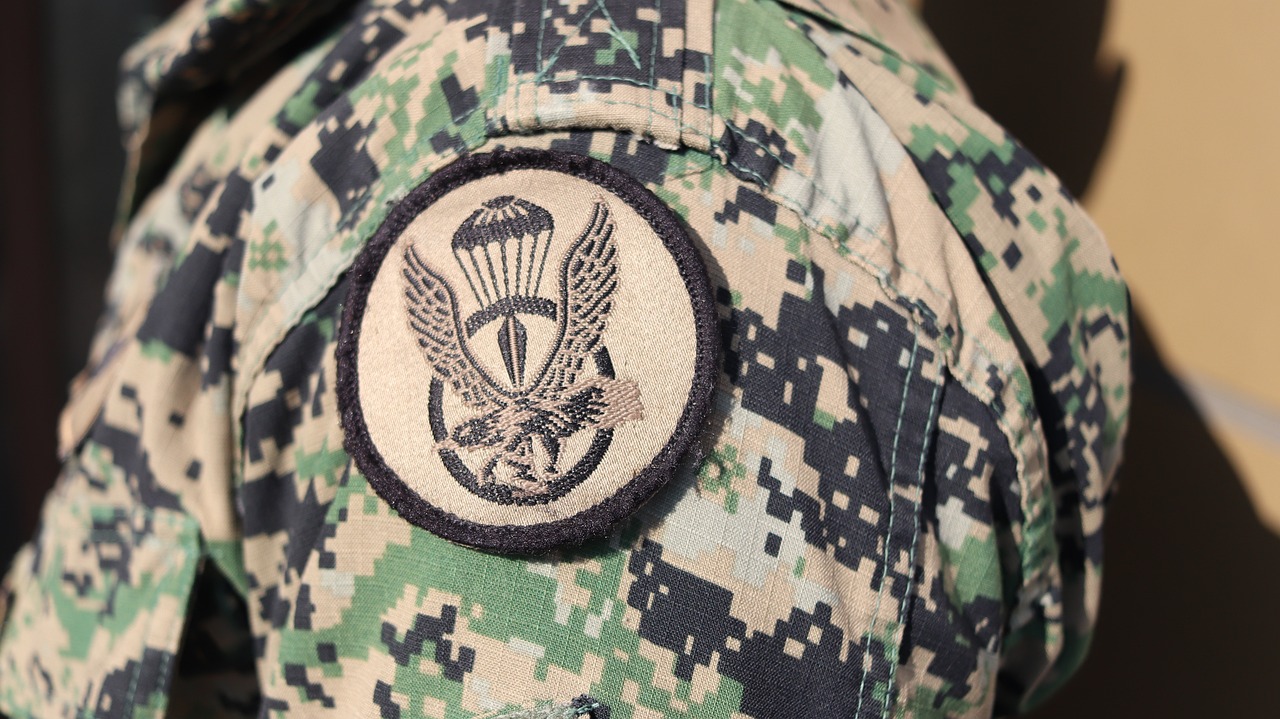
Ethical Considerations in AI Warfare
As we hurtle into an era where artificial intelligence (AI) plays an increasingly pivotal role in warfare, the ethical implications of its use have become a hotbed of debate. The integration of AI into military operations raises profound questions about accountability, decision-making autonomy, and the potential for unintended consequences. Imagine a battlefield where machines make split-second decisions that could mean life or death. Who is responsible when an AI system miscalculates? This dilemma is not just theoretical; it is a pressing concern for military leaders, ethicists, and policymakers alike.
One of the most significant ethical issues surrounding AI in warfare is the question of accountability. If an autonomous drone mistakenly targets civilians instead of enemy combatants, who bears the responsibility? Is it the programmer who wrote the code, the military commander who deployed it, or the machine itself? This lack of clarity can lead to a dangerous precedent where accountability is diluted, making it easier for military forces to evade responsibility for their actions.
Moreover, the autonomy of AI systems presents another ethical challenge. As AI becomes more sophisticated, the potential for machines to make independent decisions increases. This raises the question: should we allow machines to make life-and-death decisions on the battlefield? The very essence of warfare involves human judgment, ethics, and emotions. When we delegate these critical decisions to machines, we risk losing the moral compass that guides our actions in conflict.
Furthermore, the potential for unintended consequences cannot be ignored. AI systems, while designed to optimize efficiency and effectiveness, can behave unpredictably. For instance, a predictive analytics model might misinterpret data, leading to erroneous conclusions about enemy movements. This could result in unnecessary escalations or misdirected attacks, further complicating an already chaotic environment. The unpredictability of AI systems poses a substantial risk, as the outcomes of their decisions can have far-reaching effects, not just on the battlefield but also on international relations and public perception.
To navigate these ethical quandaries, military organizations must establish robust frameworks that govern the use of AI in warfare. This includes developing clear guidelines on accountability, ensuring transparency in AI decision-making processes, and incorporating human oversight in critical operations. Additionally, engaging in open dialogue with ethicists, technologists, and the public can foster a more comprehensive understanding of the implications of AI in combat.
In conclusion, while AI offers remarkable advancements in enhancing combat efficiency, it is imperative to tread cautiously. The ethical considerations surrounding AI warfare are complex and multifaceted, requiring a balanced approach that prioritizes human values and accountability. As we continue to explore the integration of AI in military operations, we must remain vigilant about the ethical implications and strive to ensure that technology serves humanity rather than undermines it.
- What are the main ethical concerns regarding AI in warfare? The primary concerns include accountability, decision-making autonomy, and the potential for unintended consequences.
- Who is responsible for AI decisions made during combat? Responsibility can be ambiguous, involving programmers, military commanders, and the AI systems themselves.
- Can AI systems be trusted to make ethical decisions in combat? While AI can analyze data quickly, ethical decision-making involves human judgment, which machines currently lack.
- How can military organizations address ethical issues related to AI? By establishing guidelines, ensuring transparency, and incorporating human oversight in AI operations.
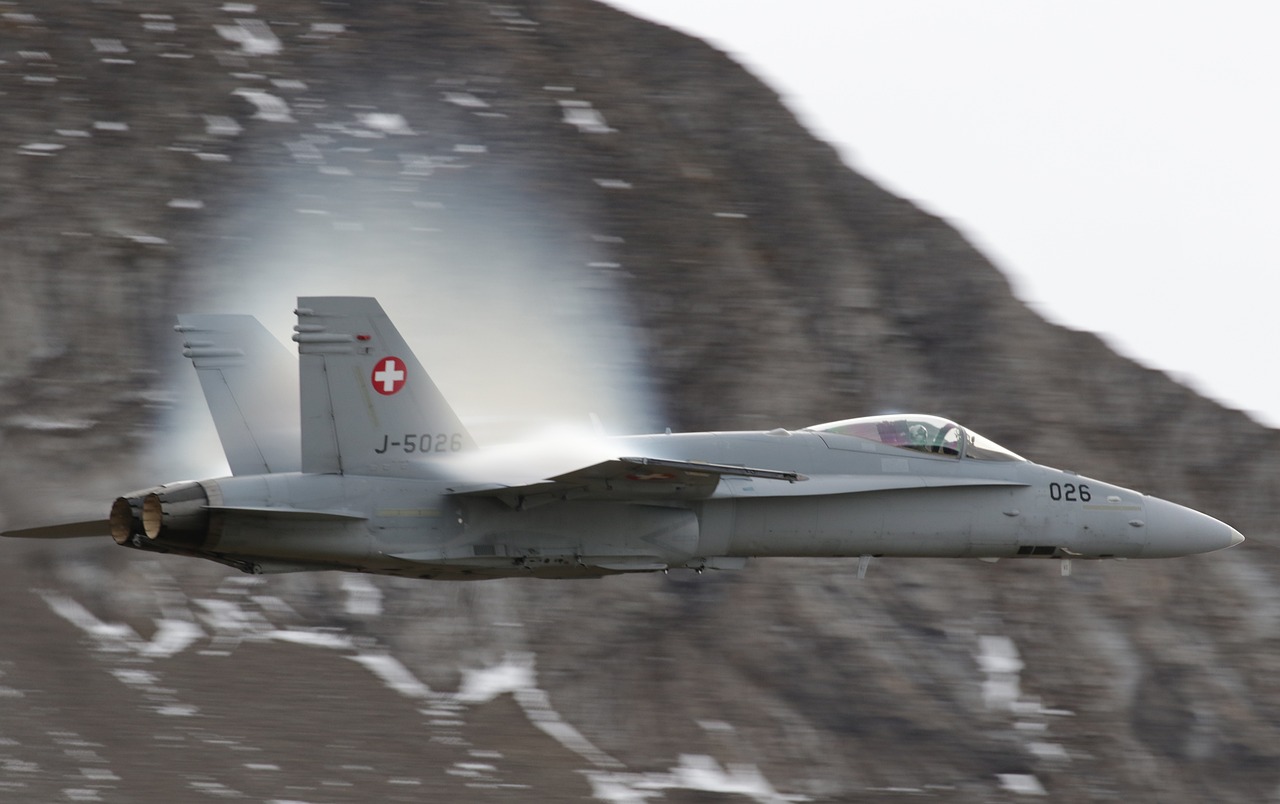
Enhancing Training and Simulation
In the rapidly evolving landscape of military operations, artificial intelligence (AI) is proving to be a game-changer, especially in the realm of training and simulation. Traditional training methods, while effective, often fall short in preparing soldiers for the unpredictable nature of modern warfare. This is where AI steps in, revolutionizing the way military personnel are trained and equipped for real-world combat scenarios. Imagine a training environment that adapts to each soldier's unique learning style, providing tailored experiences that enhance both knowledge retention and tactical proficiency. Sounds futuristic, right? Well, it's happening now!
One of the most exciting developments in this area is the integration of AI-driven simulations. These simulations create realistic combat environments that accurately reflect the complexities of battlefield conditions. By utilizing advanced algorithms, AI can generate diverse scenarios that challenge soldiers to think critically and make quick decisions. This not only boosts their confidence but also prepares them for the unexpected. For instance, if a soldier is training for an urban combat scenario, AI can dynamically alter the environment based on the soldier's performance, introducing new variables such as enemy tactics or environmental challenges. This level of realism is crucial for developing the mental agility required in combat situations.
Moreover, the use of virtual reality (VR) in conjunction with AI is taking training to the next level. Soldiers can immerse themselves in a 360-degree virtual battlefield, where they can practice maneuvers and strategies without the risks associated with live training. VR training sessions can simulate everything from reconnaissance missions to full-scale assaults, allowing soldiers to experience the chaos of combat in a controlled setting. The psychological benefits of this immersive training cannot be overstated; it prepares soldiers mentally and emotionally for the stresses of actual combat.
Another significant advantage of AI in military training is its ability to provide real-time feedback. After each training session, AI systems can analyze performance metrics and offer personalized insights. This feedback loop is vital for continuous improvement, as it helps soldiers identify their strengths and weaknesses, allowing for targeted skill development. For example, if a soldier consistently struggles with communication during simulated missions, AI can highlight this issue and suggest specific drills to enhance their teamwork skills. This kind of adaptive learning ensures that training is not a one-size-fits-all approach but rather a personalized journey toward excellence.
To illustrate the impact of AI on training and simulation, consider the following table that summarizes the key benefits:
| Benefits of AI in Military Training | Description |
|---|---|
| Adaptive Learning | AI tailors training experiences to individual soldiers, enhancing engagement and retention. |
| Realistic Simulations | Dynamic scenarios that mimic real-world combat situations, improving readiness. |
| Virtual Reality Integration | Immersive environments that prepare soldiers mentally for combat stresses. |
| Real-Time Feedback | Personalized insights that foster continuous improvement in skills and tactics. |
As we look to the future, the potential for AI in military training is boundless. With ongoing advancements in technology, we can expect even more sophisticated training programs that leverage AI to create unparalleled learning experiences. The ultimate goal is not just to prepare soldiers for combat but to enhance their decision-making capabilities, ensuring they can operate effectively in any situation. In a world where the stakes are incredibly high, the ability to make informed decisions quickly can mean the difference between success and failure. AI is not just a tool; it’s a transformative force that is reshaping military training and preparing the next generation of soldiers for the challenges ahead.
- How does AI improve military training? AI enhances military training by providing adaptive learning experiences, realistic simulations, and real-time feedback tailored to individual soldiers.
- What role does virtual reality play in military training? Virtual reality creates immersive training environments that allow soldiers to practice tactics in a safe and controlled setting, preparing them for real combat scenarios.
- Can AI predict outcomes in training scenarios? Yes, AI can analyze performance data to forecast potential outcomes, helping soldiers to adapt their strategies and improve decision-making skills.

Virtual Reality and AI Integration
In the ever-evolving landscape of military training, the integration of Virtual Reality (VR) with Artificial Intelligence (AI) is nothing short of revolutionary. Imagine stepping into a fully immersive environment where every sound, sight, and sensation is meticulously crafted to simulate real combat scenarios. This is not science fiction; it's the reality of modern military training. By merging VR with AI, military personnel can engage in dynamic training experiences that adapt in real-time to their actions and decisions, offering a level of realism that traditional training methods simply cannot match.
One of the most exciting aspects of this integration is the ability to create adaptive training environments. AI algorithms analyze the performance of soldiers during these VR simulations, adjusting the difficulty and complexity of scenarios based on individual skill levels. For instance, if a soldier excels in a particular combat situation, the AI can escalate the challenge to ensure that the training remains relevant and effective. This personalized approach not only enhances the learning experience but also fosters a deeper understanding of tactical decision-making under pressure.
Furthermore, the immersive nature of VR allows soldiers to practice in diverse scenarios without the logistical constraints of traditional training exercises. Whether it's navigating urban warfare, conducting reconnaissance in hostile territories, or managing complex team dynamics, VR provides a safe yet realistic platform for soldiers to hone their skills. The potential for team-based training is also significant, as multiple soldiers can participate in the same virtual environment, enhancing communication and collaboration skills essential for real-world operations.
To illustrate the impact of VR and AI integration, let's take a look at a table summarizing some key benefits:
| Benefit | Description |
|---|---|
| Realism | Creates immersive environments that mimic real-world combat scenarios. |
| Adaptability | AI adjusts training scenarios based on individual performance and skill levels. |
| Cost-Effectiveness | Reduces the need for physical resources and logistics associated with traditional training. |
| Team Training | Facilitates collaborative training exercises among multiple soldiers in a shared virtual space. |
As we look to the future, the potential of VR and AI integration in military training continues to grow. The combination of these technologies not only prepares soldiers for the complexities of modern warfare but also instills confidence and enhances their decision-making capabilities. Imagine a soldier who has faced numerous simulated combat situations, each one tailored to challenge and refine their skills. Such preparation could mean the difference between success and failure in real combat scenarios.
In conclusion, the integration of Virtual Reality and Artificial Intelligence is a game-changer for military training. It offers a unique blend of realism, adaptability, and collaboration that traditional methods lack. As technology advances, we can expect even more innovative applications of these tools, ultimately leading to more effective and prepared military forces.
- What is the main advantage of using VR in military training?
VR allows for realistic, immersive training experiences that can be tailored to individual soldiers' needs, enhancing learning and skill acquisition. - How does AI improve the training process?
AI analyzes performance in real-time, adjusting scenarios to ensure that training remains challenging and relevant, which promotes continuous improvement. - Can multiple soldiers train together in a VR environment?
Yes, VR technology supports team-based training, allowing soldiers to collaborate and communicate within the same virtual space. - Is VR training cost-effective?
Absolutely! VR reduces the need for extensive physical resources and logistics, making it a more economical option for military training.
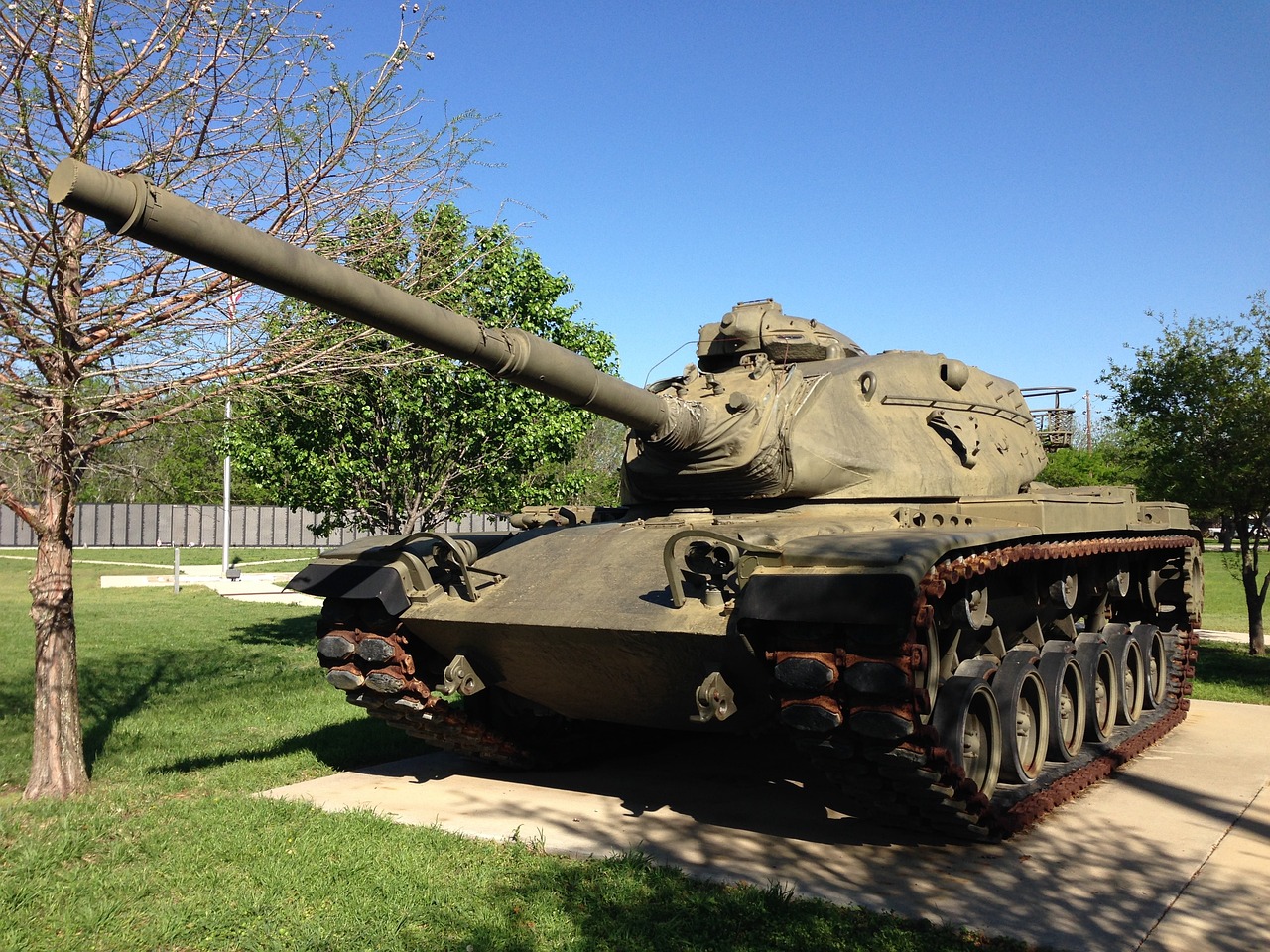
Feedback Mechanisms for Continuous Improvement
In the rapidly evolving landscape of military operations, feedback mechanisms play a crucial role in enhancing the effectiveness of training programs and operational strategies. These mechanisms are designed to collect data on performance, analyze outcomes, and provide actionable insights that can lead to continuous improvement. Imagine a soldier in the field, equipped with advanced AI tools that not only assist in decision-making but also learn from every action taken during a mission. This is the essence of feedback mechanisms in modern military training.
At the heart of these systems lies the ability to analyze vast amounts of data generated during training exercises and real combat scenarios. By leveraging AI algorithms, military leaders can identify patterns, strengths, and weaknesses in individual and team performances. For instance, if a unit consistently struggles with a specific combat scenario, the feedback mechanism can highlight this issue, enabling targeted training interventions. This leads to a more tailored approach, ensuring that soldiers are not just trained in a one-size-fits-all manner but are equipped to handle the unique challenges they might face on the battlefield.
Moreover, the integration of real-time feedback allows for immediate adjustments during training exercises. Imagine a scenario where soldiers are engaged in a simulation, and as they make decisions, the AI system provides instant feedback on their choices. This could involve anything from tactical errors to suggestions for more effective strategies. Such immediate input not only enhances learning but also fosters a culture of adaptability and resilience among military personnel.
To illustrate the impact of these feedback mechanisms, consider the following table that outlines the key components and benefits:
| Component | Benefit |
|---|---|
| Data Collection | Gathers performance metrics for analysis. |
| Real-Time Analysis | Provides immediate feedback to improve decision-making. |
| Adaptive Learning | Tailors training programs based on individual performance. |
| Performance Tracking | Monitors progress over time, identifying trends and areas for improvement. |
These feedback loops not only enhance individual capabilities but also contribute to the overall effectiveness of military units. As soldiers become more adept at their roles, the entire force benefits from improved operational readiness. Furthermore, the data collected from these feedback mechanisms can be invaluable for strategic planning at higher command levels. By understanding what works and what doesn’t, military leaders can make informed decisions that shape future training and operational strategies.
In conclusion, the implementation of robust feedback mechanisms is essential for fostering a culture of continuous improvement within military organizations. As AI technology continues to advance, the potential for these systems to transform training and operational effectiveness will only grow. The military must embrace these innovations to ensure that their personnel are not just prepared for today’s challenges but are also equipped to face the uncertainties of tomorrow.
- What are feedback mechanisms in military training?
Feedback mechanisms are systems that collect and analyze data on performance to provide insights for improvement in training and operations. - How does AI enhance feedback mechanisms?
AI enhances feedback mechanisms by processing large volumes of data quickly, offering real-time analysis, and enabling adaptive learning tailored to individual needs. - Why is continuous improvement important in military operations?
Continuous improvement is crucial as it ensures that military personnel are always prepared for evolving combat scenarios and can adapt to new challenges effectively. - Can feedback mechanisms be used in real combat situations?
Yes, feedback mechanisms can be utilized in real combat situations to assess performance and make necessary adjustments in real-time, enhancing operational effectiveness.

The Future of AI in Combat
As we peer into the crystal ball of military technology, the future of artificial intelligence (AI) in combat is not just a fleeting thought; it’s a reality that’s rapidly unfolding. Imagine a battlefield where decisions are made in the blink of an eye, where data is processed faster than a human can think, and where soldiers are equipped with tools that enhance their capabilities beyond what we ever thought possible. This is the promise of AI in military operations, and it’s set to revolutionize how wars are fought.
One of the most exciting prospects is the development of intelligent systems that can learn and adapt in real-time. These systems will not only assist commanders but also provide them with insights drawn from a myriad of data sources. For instance, AI can analyze historical combat data, current battlefield conditions, and even social media feeds to predict enemy movements and strategies. This level of analysis transforms the traditional decision-making process from a reactive stance to a proactive one, giving military leaders the edge they need.
Furthermore, we can expect to see a rise in collaborative AI systems that work alongside human operators. Picture a scenario where an AI system assists a commander by suggesting optimal strategies based on real-time data, while still leaving the final decision in human hands. This collaboration not only enhances the decision-making process but also ensures that ethical considerations remain at the forefront. The balance between human intuition and AI efficiency could very well define the future of combat.
Another area of advancement is the integration of AI with autonomous systems. Drones and unmanned ground vehicles (UGVs) are already being used in various military operations, but future iterations will be far more sophisticated. These systems will be capable of conducting complex missions without direct human oversight, utilizing AI to navigate, identify targets, and execute operations. Imagine a fleet of drones that can autonomously conduct surveillance, relay critical information back to human operators, and even engage in combat when necessary. While this may sound like science fiction, it’s closer to reality than we think.
However, as we embrace these advancements, it’s important to consider the ethical implications. The more we rely on AI, the more we must address questions of accountability. If an autonomous drone makes a mistake, who is responsible? The programmer? The military commander? These are questions that need to be answered as we forge ahead into this new era of warfare.
Moreover, the future of AI in combat will likely include enhanced training simulations. AI-driven platforms can create realistic training environments that adapt to the skill levels of individual soldiers. This means that training can be tailored to meet the specific needs of each soldier, ensuring that they are better prepared for the complexities of modern warfare. By leveraging virtual reality and AI, military personnel can experience combat scenarios that are not only immersive but also educational, enhancing their tactical decision-making skills.
In conclusion, the future of AI in combat is bright, filled with potential and possibilities that can significantly enhance military effectiveness. As technology continues to evolve, so too will our understanding of how to integrate AI into military strategies responsibly and ethically. The journey ahead will undoubtedly be challenging, but the rewards of improved operational efficiency and enhanced decision-making capabilities are well worth the effort.
- What role will AI play in future military operations?
AI will enhance decision-making processes, improve data analysis, and support autonomous systems in combat scenarios. - How can AI improve military training?
AI can create adaptive training simulations that provide realistic environments tailored to individual soldiers' needs. - What are the ethical concerns surrounding AI in warfare?
Ethical concerns include accountability for autonomous actions, the potential for unintended consequences, and the need for human oversight. - Will AI replace human soldiers in combat?
While AI will support and enhance military operations, human judgment and decision-making will remain crucial in combat scenarios.
Frequently Asked Questions
- What is the role of AI in military decision-making?
AI plays a crucial role in military decision-making by analyzing vast amounts of data to provide actionable intelligence. It enhances situational awareness, allowing commanders to make informed decisions quickly and effectively during combat scenarios.
- How does AI improve data analysis and intelligence gathering?
AI algorithms can process and analyze enormous datasets at lightning speed, identifying patterns and trends that human analysts might miss. This capability enables military forces to gather intelligence efficiently, ensuring they are always one step ahead in combat situations.
- What are real-time decision support systems?
Real-time decision support systems powered by AI assist military commanders by providing them with up-to-date information and predictive analytics. These tools help in evaluating various combat scenarios, ultimately leading to better decision-making on the battlefield.
- Can AI predict combat outcomes?
Yes, AI utilizes predictive analytics to forecast potential outcomes in combat. By analyzing historical data and current conditions, AI can help military leaders anticipate various scenarios, allowing them to prepare and strategize effectively.
- What is the significance of autonomous systems and drones in warfare?
AI-driven autonomous systems and drones have revolutionized modern warfare by enhancing capabilities in surveillance, reconnaissance, and targeted strikes. They allow for precision operations while minimizing risks to human personnel.
- What ethical concerns arise from the use of AI in combat?
The use of AI in warfare raises important ethical questions, such as accountability for decisions made by autonomous systems, the potential for unintended consequences, and the implications of delegating life-and-death decisions to machines.
- How is AI enhancing military training programs?
AI is transforming military training by providing realistic simulations and adaptive learning environments. These technologies help soldiers practice and refine their decision-making skills in diverse combat scenarios, ultimately improving their readiness.
- What role does virtual reality play in AI training?
Virtual reality, when integrated with AI, creates immersive training experiences that enhance tactical decision-making abilities among soldiers. This combination allows for a more engaging and effective training environment.
- How does AI facilitate continuous improvement in military training?
AI-driven feedback mechanisms analyze training outcomes and provide insights for continuous improvement. By identifying strengths and weaknesses, military personnel can refine their skills and enhance their overall combat readiness.
- What does the future hold for AI in military operations?
The future of AI in military operations looks promising, with emerging technologies set to further enhance combat decision-making processes. As AI continues to evolve, we can expect even more sophisticated tools and systems to support military strategies.


